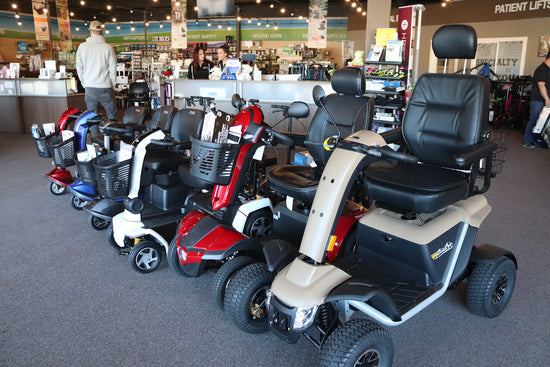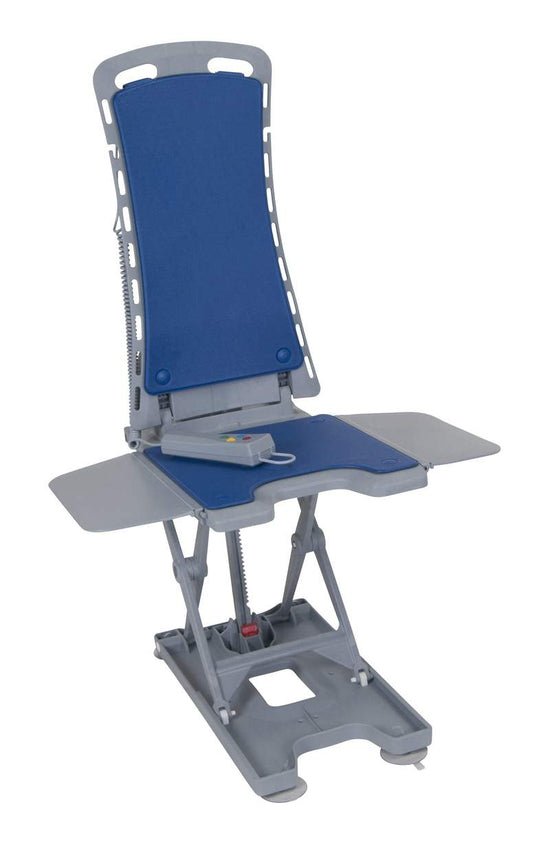The healthcare industry relies on precision and efficiency, where every tool and device plays a vital role in patient outcomes. User-friendly design is more than just a convenience in medical supplies—it's a necessity. Intuitive and accessible equipment ensures healthcare professionals can work efficiently while minimizing errors under pressure.
At the same time, well-designed products empower patients, enabling safer and easier use in home care settings. By prioritizing usability and thoughtful design, medical supplies can bridge the gap between functionality and safety, ultimately improving the quality of care for all.
How User-Friendly Design Reduces Medical Errors
Medical environments are inherently high-pressure, making intuitive design in medical supplies and software crucial for reducing errors. When interfaces and devices are designed with clarity and usability in mind, they create safeguards against common mistakes, enhancing both patient safety and healthcare outcomes.
Clear navigation and logical workflows are central to this approach. For instance, healthcare software that enables seamless access to patient records or medication details can prevent data oversight. Standardized protocols, like digital checklists for surgeries, ensure every critical step is followed, significantly reducing risks tied to human error. Similarly, decision support tools integrated into medical workflows serve as a second layer of protection. Alerts about drug interactions or allergy risks, for example, prompt clinicians to verify and adjust prescriptions before finalizing them.
Error prevention features extend to physical medical supplies. Devices with intuitive labeling and simplified usage instructions reduce the learning curve for healthcare professionals and minimize mishandling. These designs also assist patients in home care, empowering them to manage medical needs safely.
By embedding user-friendly elements—be it in digital interfaces or physical tools—healthcare systems can mitigate errors, foster trust, and ensure higher standards of care. Intuitive design is not just an enhancement but a necessity for error reduction in modern medicine.
Enhancing Patient Independence Through Intuitive Design
Intuitive design in medical devices and healthcare systems plays a vital role in empowering patients and promoting independence in care. By incorporating user-friendly features and technology, these systems enable individuals to manage their health more confidently, fostering autonomy and improving overall outcomes.
One notable innovation includes wearable health devices that provide patients with real-time feedback on their vital signs, activity levels, or medication schedules. These devices simplify complex data into actionable insights, allowing users to track progress and make informed decisions without relying solely on medical professionals. For example, wearables with clear prompts and context-sensitive messages can guide users through symptom management or medication adjustments, enhancing their ability to self-regulate.
Patient portals are another critical tool in promoting independence. Designed with intuitive navigation and accessible interfaces, they allow users to review medical records, schedule appointments, and manage prescriptions from home. Features like visual data representations or simplified medical language ensure that even those with limited technical skills can engage with their health information effectively.
Additionally, the integration of artificial intelligence enhances these systems further. AI-driven tools tailor information to individual needs, offering personalized guidance and support for better self-care. These design strategies not only empower patients but also reduce dependency on healthcare providers, shifting the focus toward proactive and independent health management.
Boosting Healthcare Efficiency with Intuitive Medical Supplies
The design of medical supplies plays a pivotal role in streamlining healthcare workflows and enhancing overall operational efficiency. User-friendly and intuitive designs allow healthcare professionals to focus on patient care rather than grappling with complex tools or systems, resulting in better outcomes for both providers and patients.
Ergonomic designs are a prime example of how intuitive medical supplies enhance efficiency. Tools that are comfortable to use and minimize physical strain, such as well-balanced surgical instruments or lightweight diagnostic devices, reduce fatigue and increase productivity during long shifts. Automated systems further amplify these benefits by integrating seamlessly into existing workflows. For instance, digital medical devices with streamlined interfaces simplify data entry and retrieval, reducing time-consuming errors and enabling faster decision-making.
One study highlights the importance of usability by showing how poorly designed medical technology increases errors and strains on clinical staff, impacting patient safety. Conversely, user-centered design, which incorporates features like simplified navigation and consistent layouts, has been proven to reduce cognitive load and support more effective task management. Automated inventory systems, for example, track critical supplies in real time, ensuring availability without manual oversight.
Through intuitive design, medical supplies function as collaborative tools, enhancing healthcare efficiency by aligning technology with the practical needs of professionals and patients.
Economic Benefits of User-Centered Medical Equipment
Implementing user-centered design in medical equipment not only enhances clinical outcomes but also drives significant economic benefits for healthcare providers. By focusing on usability and efficiency, these designs directly reduce operational costs and make better use of resources.
Key financial advantages include:
-
Reduction in Medical Errors: User-friendly devices minimize mistakes during use, preventing costly errors that may lead to adverse outcomes, readmissions, or additional treatments. Improved usability ensures healthcare professionals spend less time correcting issues and more on patient care.
-
Cost Savings Through Reprocessing: According to industry reports, hospitals using reprocessed medical devices can cut expenses by 30–50%. These savings enable healthcare facilities to reinvest in other critical areas such as staff hiring, training, or pandemic preparedness.
-
Streamlined Workflows: Intuitive equipment reduces the time required for tasks, enhancing staff efficiency. Less time spent on navigating complex systems translates into lower labor costs and fits within tighter operational schedules.
-
Decreased Equipment Training Costs: Medical tools designed with clear interfaces and standardized controls reduce the need for extensive training, lowering onboarding overheads, particularly in high-turnover environments.
By improving both operational and financial efficiencies, user-centered medical equipment supports sustainable practices, ensuring healthcare facilities can allocate their resources more strategically. These economic benefits underscore the importance of thoughtful design in strengthening the healthcare system’s financial resilience.
Bridging the Gap Between Safety and Functionality
Designing medical devices necessitates a careful balance between achieving exceptional functionality and maintaining stringent safety standards. A focus on user-centered design can bridge this gap, ensuring devices meet the needs of patients and caregivers without compromising safety. By merging ergonomics, intuitive interfaces, and robust engineering, medical supplies can function efficiently while safeguarding users’ well-being.
Key strategies for achieving this balance include:
-
Prioritize Risk Management
Implementing a comprehensive risk assessment framework, such as ISO 14971, helps identify and mitigate potential hazards throughout a device's lifecycle. From concept to deployment, proactive strategies ensure devices remain safe under various circumstances. -
User-Centric Design
Creating devices with intuitive interfaces and clear instructions reduces the risk of misuse. For example, incorporating visual aids and standardized controls ensures that even non-technical users can operate equipment confidently. -
Integrate Usability Testing
Early and continuous user testing identifies and resolves design flaws before production. This process minimizes safety risks while optimizing functionality for diverse user groups. -
Safety-Driven Innovations
Incorporating automated safety features, such as alerts for incorrect usage or performance abnormalities, ensures functional reliability without compromising user care. -
Durability in Design
Building devices to withstand stress, frequent use, and environmental factors like cleaning chemicals guarantees long-term safety and functionality.
Everything Medical epitomizes these principles by offering a carefully curated range of medical supplies designed with both functionality and safety in mind. From ergonomic mobility aids to advanced at-home medical equipment, they provide solutions tailored to enhance healthcare efficiency and user experience. Explore their offerings at Everything Medical and discover how user-centered design can transform patient care without sacrificing safety.
By adopting these strategies, the medical industry can continue to innovate while prioritizing user welfare, ultimately fostering trust and delivering unparalleled care solutions.




